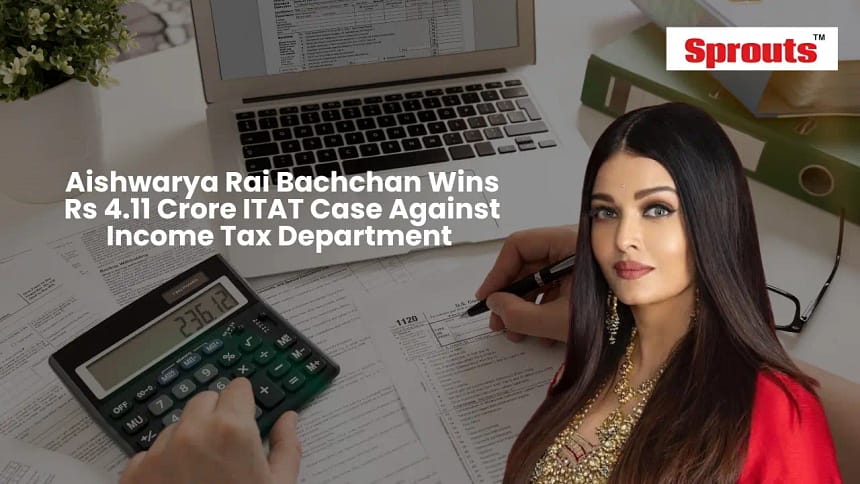Aishwarya Rai Bachchan Wins Rs 4.11 Crore ITAT Case Against Income Tax Department
• Understanding the Section 14A Disallowance Dispute
• ITAT Exposes “Devoid of Logic” Tax Computation
• Implications for Taxpayers and Departmental Accountability
In a landmark victory, the Mumbai Income Tax Appellate Tribunal (ITAT) has ruled in favor of Aishwarya Rai Bachchan, deleting a ₹4.11 crore disallowance made by the Income Tax Department. The tribunal termed the computation “devoid of logic” and upheld the earlier CIT(A) order. The ruling clarifies the misuse of Section 14A disallowance, setting a precedent on how authorities must provide reasoned satisfaction before imposing additional tax burdens.
- Aishwarya Rai Bachchan Wins Rs 4.11 Crore ITAT Case Against Income Tax Department
- • Understanding the Section 14A Disallowance Dispute
- • ITAT Exposes “Devoid of Logic” Tax Computation
- • Implications for Taxpayers and Departmental Accountability
- Aishwarya Rai Bachchan Wins Rs 4.11 Crore ITAT Case Against Income Tax Department
- Understanding the Section 14A Disallowance Dispute
- ITAT Exposes “Devoid of Logic” Tax Computation
- Legal Precedents and the Rule of Law Upheld
- Implications for Taxpayers and Departmental Accountability
Aishwarya Rai Bachchan Wins Rs 4.11 Crore ITAT Case Against Income Tax Department
In a significant legal victory, the Mumbai Income Tax Appellate Tribunal (ITAT) has ruled in favor of actor Aishwarya Rai Bachchan. The tribunal deleted a hefty Rs 4.11 crore disallowance made by the tax department. This decision underscores critical legal principles for taxpayers nationwide.
The two-member ITAT bench upheld a prior order from the Commissioner of Income-Tax (Appeals). The bench found the Assessing Officer’s (AO) action lacked proper reasoning and satisfaction. This investigation by the Sprouts News Special Investigation Team delves into the ruling’s details.
Understanding the Section 14A Disallowance Dispute
The case pertained to the assessment year 2022-23. Aishwarya Rai Bachchan filed her ITR declaring an income of Rs 39.33 crore. The AO initiated scrutiny concerning expenses for earning exempt income.
The taxpayer had already made a voluntary suo moto disallowance of Rs 49.08 lakh. This was despite her assertion that no direct expenditure was incurred. However, the AO proceeded to compute an additional Rs 4.11 crore disallowance.
This action increased her assessed income to Rs 43.44 crore. The AO based this on her total investment portfolio’s average value. This approach failed to isolate investments that actually generated tax-free income.
Also Read: Kerala HC: First Wife’s Consent Must for Muslim 2nd Marriage.
ITAT Exposes “Devoid of Logic” Tax Computation
The ITAT’s order, dated 31 October 2025, was sharply critical of the department’s calculation. The tribunal highlighted a major logical flaw in the AO’s disallowance figure.
The total expenses debited in her Profit and Loss account were only Rs 2.48 crore. The disallowance computed by the AO was a staggering Rs 4.60 crore. The bench found this computation “devoid of any logic and clearly unreasonable.”
The tribunal stated the AO failed to consider the complete factual matrix. The disallowance was made without proper appreciation of established legal principles. This represents a significant procedural failure by the tax authorities.
Legal Precedents and the Rule of Law Upheld
The ITAT bench emphasized the mandatory procedure under Section 14A read with Rule 8D. The AO must record clear satisfaction before rejecting a taxpayer’s computation. Citing the Supreme Court’s landmark Maxopp Investment Ltd vs CIT ruling, the ITAT reinforced this.
Mere rejection without providing cogent reasoning is legally impermissible. The AO simply dismissed the actor’s submission without justification. This automatic application of Rule 8D was invalidated by the tribunal.
The bench also referenced the special bench ruling in Vireet Investments Pvt Ltd. That case mandates considering only investments yielding actual exempt income. The AO’s blanket use of total investments was legally unsustainable.
Implications for Taxpayers and Departmental Accountability
The tribunal found the taxpayer’s voluntary disallowance of Rs 49.08 lakh reasonable. This included indirect costs like securities transaction tax. The approach was consistent with relevant judicial precedents on the matter.
Consequently, the ITAT dismissed the revenue department’s appeal entirely. It confirmed the full relief granted to Aishwarya Rai Bachchan by the CIT(A). The Rs 4.11 crore addition was deemed without any legal basis.
This ruling reaffirms that tax authorities cannot apply disallowances mechanically. The principles of natural justice and reasoned orders are paramount. This decision strengthens taxpayer rights against arbitrary assessments.
The Sprouts News analysis confirms this as a landmark case for Section 14A. It serves as a crucial reminder for the department to adhere to settled law. The ruling ensures proper checks and balances within the tax assessment ecosystem.

















